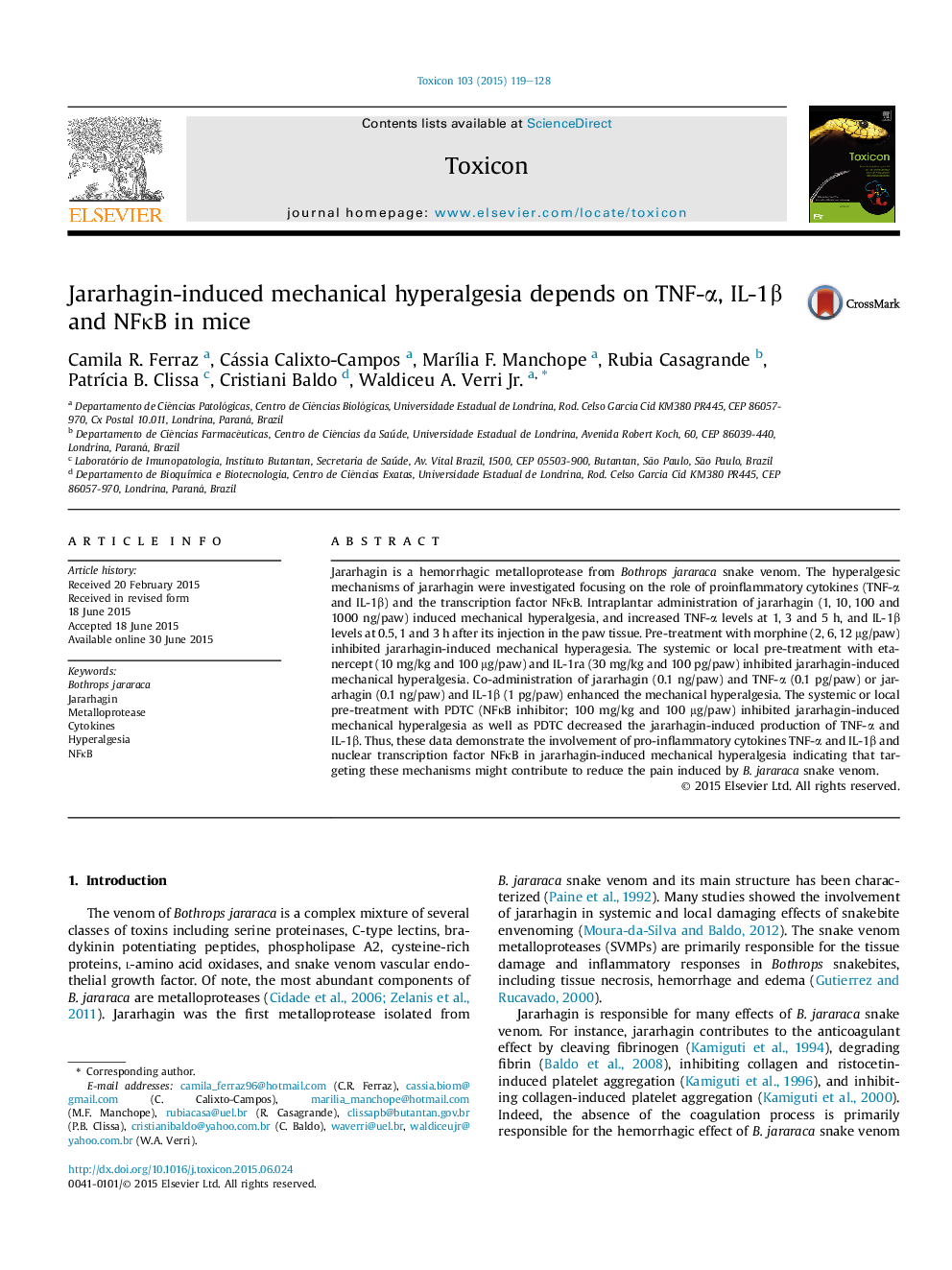| Article ID | Journal | Published Year | Pages | File Type |
|---|---|---|---|---|
| 8395435 | Toxicon | 2015 | 10 Pages |
Abstract
Jararhagin is a hemorrhagic metalloprotease from Bothrops jararaca snake venom. The hyperalgesic mechanisms of jararhagin were investigated focusing on the role of proinflammatory cytokines (TNF-α and IL-1β) and the transcription factor NFκB. Intraplantar administration of jararhagin (1, 10, 100 and 1000 ng/paw) induced mechanical hyperalgesia, and increased TNF-α levels at 1, 3 and 5 h, and IL-1β levels at 0.5, 1 and 3 h after its injection in the paw tissue. Pre-treatment with morphine (2, 6, 12 μg/paw) inhibited jararhagin-induced mechanical hyperagesia. The systemic or local pre-treatment with etanercept (10 mg/kg and 100 μg/paw) and IL-1ra (30 mg/kg and 100 pg/paw) inhibited jararhagin-induced mechanical hyperalgesia. Co-administration of jararhagin (0.1 ng/paw) and TNF-α (0.1 pg/paw) or jararhagin (0.1 ng/paw) and IL-1β (1 pg/paw) enhanced the mechanical hyperalgesia. The systemic or local pre-treatment with PDTC (NFκB inhibitor; 100 mg/kg and 100 μg/paw) inhibited jararhagin-induced mechanical hyperalgesia as well as PDTC decreased the jararhagin-induced production of TNF-α and IL-1β. Thus, these data demonstrate the involvement of pro-inflammatory cytokines TNF-α and IL-1β and nuclear transcription factor NFκB in jararhagin-induced mechanical hyperalgesia indicating that targeting these mechanisms might contribute to reduce the pain induced by B. jararaca snake venom.
Related Topics
Life Sciences
Biochemistry, Genetics and Molecular Biology
Biochemistry, Genetics and Molecular Biology (General)
Authors
Camila R. Ferraz, Cássia Calixto-Campos, MarÃlia F. Manchope, Rubia Casagrande, PatrÃcia B. Clissa, Cristiani Baldo, Waldiceu A. Jr.,
